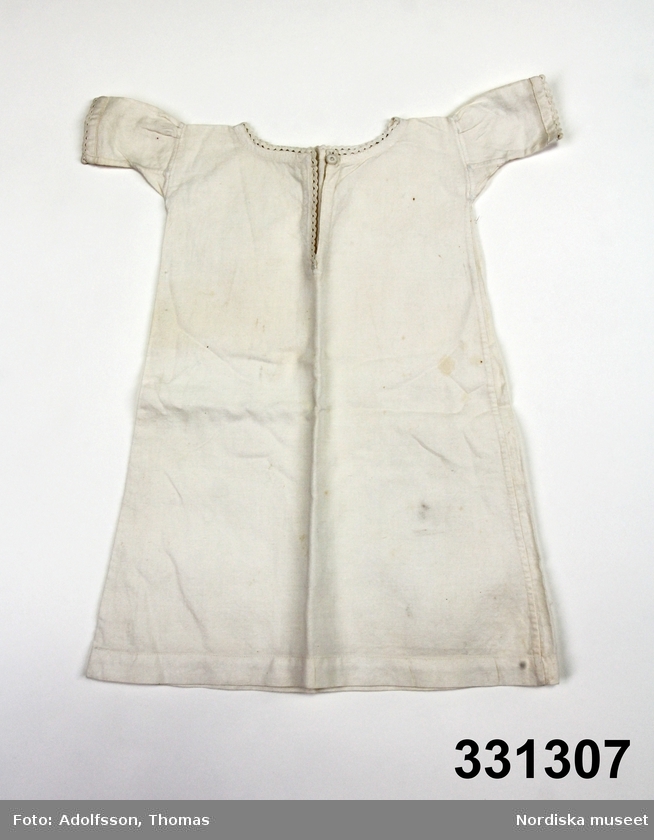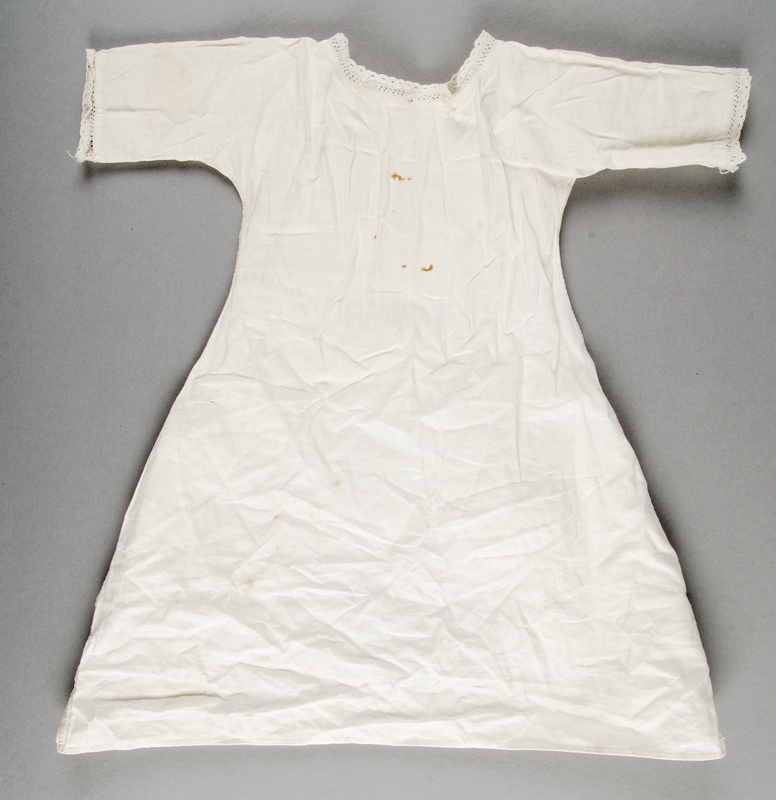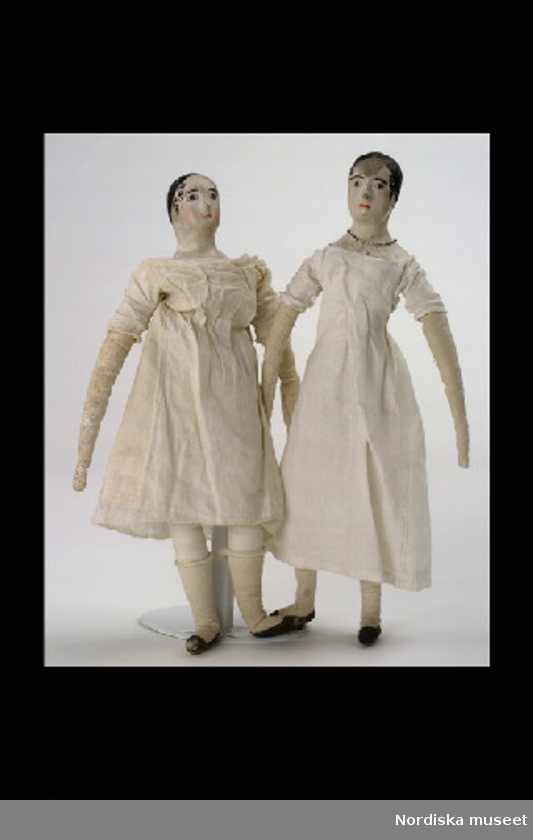Edit: I discovered I could use this as an HSF entry, so the challenge info was added 22 August 2014.)
Recently I made a mid 19th century shift, that I mainly intend for
1840’s. It is very simple, as the evidence I was able to find of Swedish
shifts from that time indicates that they were still constructed in a very
basic way, while many shifts in other countries had become more advanced.
This evidence is mostly doll’s shifts from the 1850's and -60's, as there are hardly any
extant ones for real people. As the rest of the wardrobes from which these
doll’s shifts come are very true to the fashion of the time, I suppose that the
shifts must have been as well.
The rest of the wardrobe here.
I would have preferred a linen shift, as that would have been most common, but
I didn’t want to use any I had in my stash, as I have other projects in mind
for some, and others are not in appropriate weights. Instead I used an old
cotton sheet I once got in a charity shop.
While this bothered me
slightly I now got the chance to use it for the terminology challenge in the
HSF. Calico, in the UK, New
Zeeland and Australia
meaning a plain tabby woven, white or cream cotton fabric, is what I’ve used
for this. In Swedish during the 19th century this kind of fabric
would have been called lärft (originally – at least as far back as medieval
times - lärft was used for plain, densely woven linen fabrics, but were
later used for the same quality cottons as well). A printed cotton fabric were
in the 18th century and into the 19th called kattun
in Swedish.
The shift is
constructed from rectangles, squares and triangles, the same way shifts and
shirts had been made since before the Middle Ages. There is no shoulder seam,
and one of the side gores are pieced from two halves.
I used back stitches
for joining the pieces, slip stitches for felling seams and hemming the
neckline and sleeves. The bottom hem is sewn with running stitches and a back
stitch every now and then.
For closing the slit
in front I made a thread button. It has a base of waxed, thick cotton (linen could also be used) thread,
as many originals do. It should hold up well in the wash. Wavy braid is used as
trim. You see it used in many Swedish mid century petticoats, and I’ve seen it
on doll’s shifts from both Sweden and other countries, and at least one extant woman’s chemise from the States. I
think it’s more than plausible here as well. It should survive laundry better than most kinds of lace, while still adding a bit of elegance.

The shift reaches to
just below my knees – I’d have liked it a bit longer, but this is what the
fabric allowed me to do without adding shoulder seams. And can I say again how much I like that button? :)
The Challenge: #16 Terminology (calico)
Fabric: Cotton.
Pattern: My own.
Year: 1840’s.
Notions: Cotton thread, cotton wavy braid.
How historically accurate is it? As good as it gets without studying originals
in person. Material, construction and stitches are all period.
Hours to complete: Not sure…
First worn: For the picture.
Total cost: 30SEK ($4,35; £2,61; €3,27) for the wavy
braid; everything else was in my stash. It would probably have cost about 80SEK ($11,59; £6,97;
€8,72) if I bought all the materials now.









